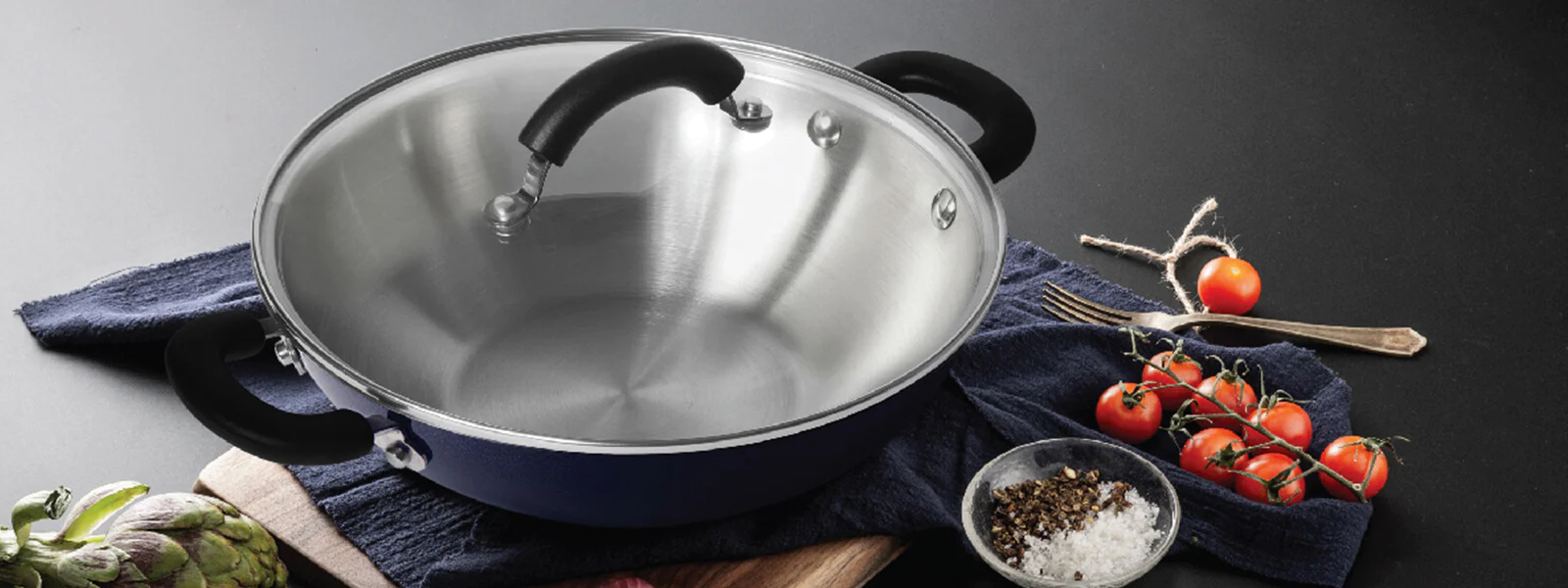A good set of cookware is an excellent investment, but with so many options available, it may be hard to choose just one. Think about how many people you’ll likely be cooking for, your skill level in the kitchen, and the type of food you want to prepare before you do anything else. It’s best to start with a core set of basics like a saucepan, skillet etc. and expand into more specialised items as needed.
Classifications of Cookware
When on the market for new cookware, the first thing to consider is the variety of options available. If you’re starting in the kitchen, you want to ensure you have the tools you need to get the job done without breaking the bank. Let’s begin with the fundamentals: while shopping for new cookware, you should prioritise four essential pans: a stock pot, a frying pan, a sauté pan, and a saucepan.
Cooking Pot
It’s a big, deep pot with a level base; that’s the Stockpot. Liquid items that don’t need to be cooked very quickly or at a high temperature can be cooked in this method. Make stocks, soups, and stews by browning or sautéing the ingredients, then adding liquid. Thanks to their high profiles, they are ideal for keeping pasta immersed as it boils. This type of pot is available in several different sizes, and it’s a good idea to stock up on a range of them in case you ever need to prepare a meal for a crowd of any size.
Skillet/Frying Pan
The skillet, often known as a frying pan, is a multipurpose cooking tool that is a must-have in any kitchen. A high-quality frying pan makes quick work of omelette flipping, stir-frying, and even searing meat. Cooking in these pans is easier because of the flat bottom and rounded edges. How scorching can it get? It all relies on the metal or other composition of your cooking vessel. Low to medium heat is recommended for nonstick pans to preserve their coating, whereas high heat is safe for stainless steel. While fry pans and skillets come in a wide range of sizes, most do not have lids.
Skillets can also be made from cast iron. Skillets constructed of cast iron require more maintenance and are better reserved for baking than regular frying pans. Because of their construction from cast iron, these pans can weigh a significant amount. If you’ve never had a skillet before, the most excellent piece of advice is to come in and handle one in your hands before making a purchase. Make sure the cast-iron skillet you purchase has been pre-seasoned.
Saute Pan
The sauté pan is designed for sautéing, which entails swiftly frying food while stirring it around in the pan while keeping the lid on. The design of a sauté pan is similar to that of a frying pan; both have a flat base. However, a sauté pan’s straight edges set it apart from a frying pan. Since they are more substantial, sauté pans have many applications beyond just sautéing. Use it for frying, searing, or making marinara and other sauces.
Saucepan
The bottom of the SaucePan is spherical, while the sides are tall and straight. This makes them an excellent option for the kitchen since they can be used to prepare a wide range of sauces and soups. Because of their versatility, saucepans are a staple in any kitchen. They may be used with or without a top to manage evaporation. In addition to reheating leftovers and cooking grains, a saucepan can be used to boil eggs or noodles.
